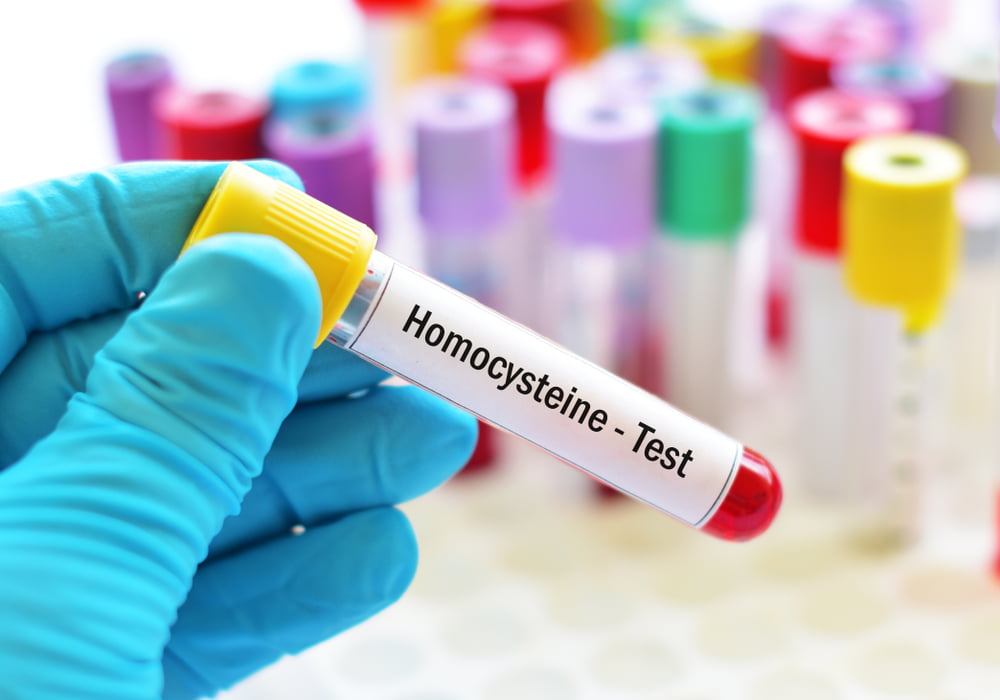Among the factors that affect blood vessel health and which can cause vascular diseases of the heart and brain, one is very little-known: the amino acid homocysteine. If present in excessive amounts in plasma, this substance can contribute to the formation of atherosclerotic plaques that impede normal blood flow, eventually blocking it, increasing the likelihood of heart attack or stroke. Checking the homocysteine level by doing simple blood tests, therefore, serves to calculate a person’s cardio and cerebrovascular risk and can be an important form of prevention.
Homocysteine is a short-lived product.
Homocysteine is an amino acid produced by our bodies from methionine, another amino acid that is present in many protein-containing foods (both plant and animal), and is therefore taken in through the diet. Normally, homocysteine is present in minimal amounts in the blood because it is the intermediate product of some biochemical processes and is rapidly converted to other useful substances. Most of the homocysteine in the blood is bound to other proteins such as albumin and is used by our body in two processes: reconversion to methionine (i.e., the same amino acid from which it came) and the production of cysteine, another sulfur-containing amino acid used for the production of glutathione (an antioxidant). For these processes to occur, there is also a need for the interaction of certain vitamins, such as B6 and B12, and folic acid.
Plasma homocysteine levels are a useful parameter to measure for cardio and neurovascular risk assessment
When homocysteine accumulates.
The free portion of plasma homocysteine, that is, the portion that does not bind to proteins, is found in two forms, one reduced and one oxidized. The latter is the most dangerous to the body because it can interfere with the health of blood vessels. It usually increases when total homocysteine values in the body are very high (over 100 micromoles per liter, while the reference range usually does not exceed 12 micromoles per liter). Excess homocysteine (hyperhomocysteinemia) can have several causes. It may be due, for example, to dietary deficits that result in the deficiency of the other substances involved in transformation processes, such as folic acid and vitamins B6 and B12. A diet low in fruits and vegetables can lead to a decrease in folic acid, while diets that eliminate or reduce foods of animal origin may lack the proper supply of vitamin B12. Elevated homocysteine levels also occur due to hypothyroidism, renal failure, and cancer. There are, then, some genetic causes: homocystinuria is a genetic disorder due precisely to mutations in genes that code for enzymes involved in homocysteine metabolism, such as that (but not the only one) of methylenetetrahydrofolate reductase or 5-mtfh reductase. Finally, taking certain types of medications, such as carbamazepine or estrogen-based contraceptives, can lead to deficiencies in folate and vitamins B6 and B12.
What are the effects of hyperhomocysteinemia?
Hyperhomocysteinemia has a negative effect on the health of the vascular system because it promotes the processes of atherosclerosis. High levels of free homocysteine actually alter the structure of the vessels both directly and indirectly, also impairing the functionality of the endothelium lining them.
Hyperhomocysteinemia promotes the processes of atherosclerosis, and thus the occurrence of strokes and heart attacks. A change of habits and the use of supplements can bring it back to normal levels.
A solution is the supplement CardioAge
Measuring the level of homocysteine in the body is simple: all that is needed is a blood sample, attesting to both the values of the amino acid and the other substances involved in its transformation. And if it does turn out to be high, correcting it is possible by introducing dietary changes or through taking supplements that affect homocysteine metabolic pathways. SoLongevity has developed CardioAge, a supplement whose patented formula promotes the conversion of homocysteine to endogenous glutathione, an antioxidant substance, and the formation of methyl groups. Cardioage was tested in a clinical trial, the results of which were published in the journal Nutrients and showed significant efficacy in reducing homocysteinemia. It also provides folate (either directly or by stimulating its production) and contributes to normal energy metabolism of cells, helping to reduce fatigue and tiredness through vitamins B2 and B3.







